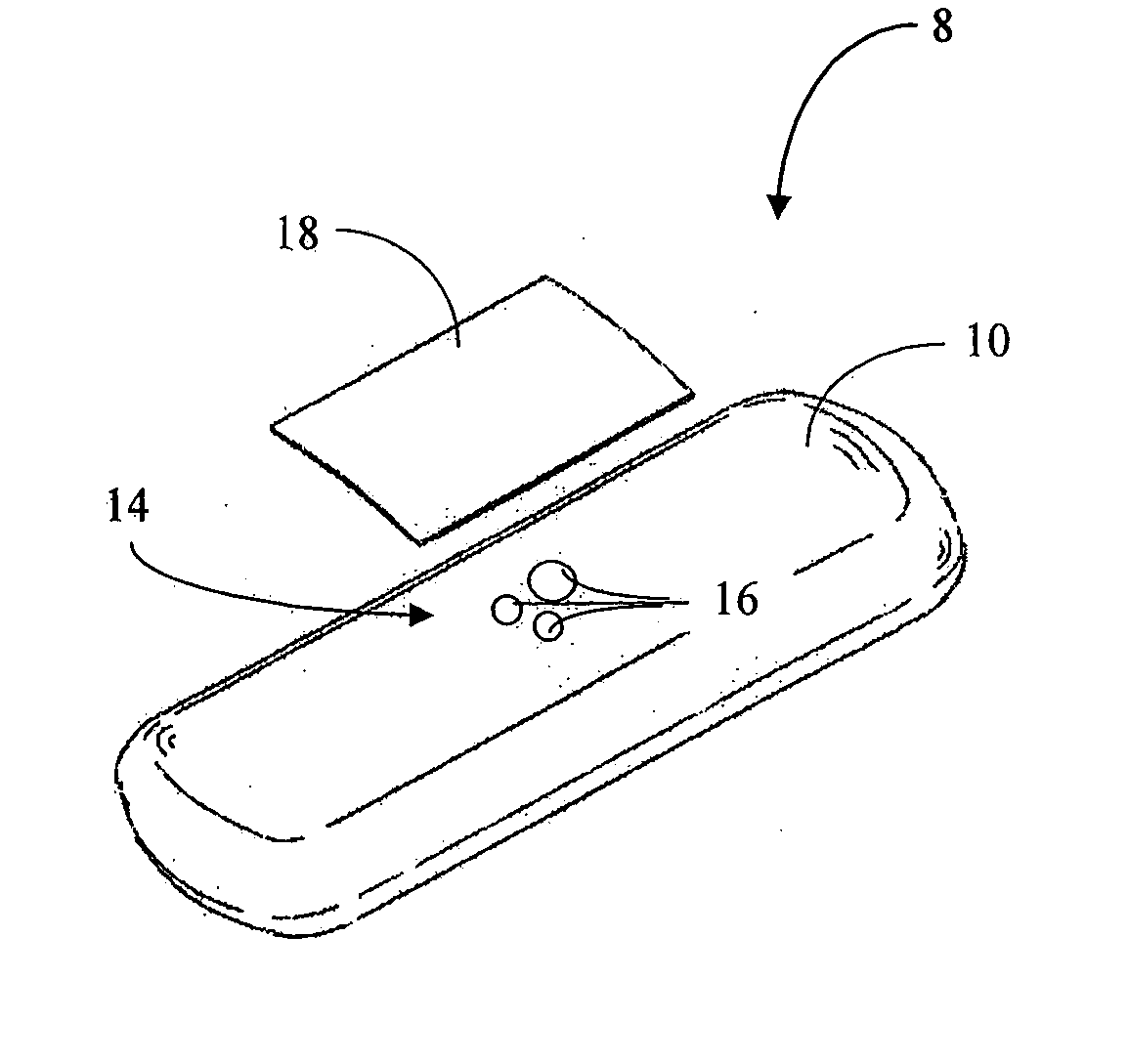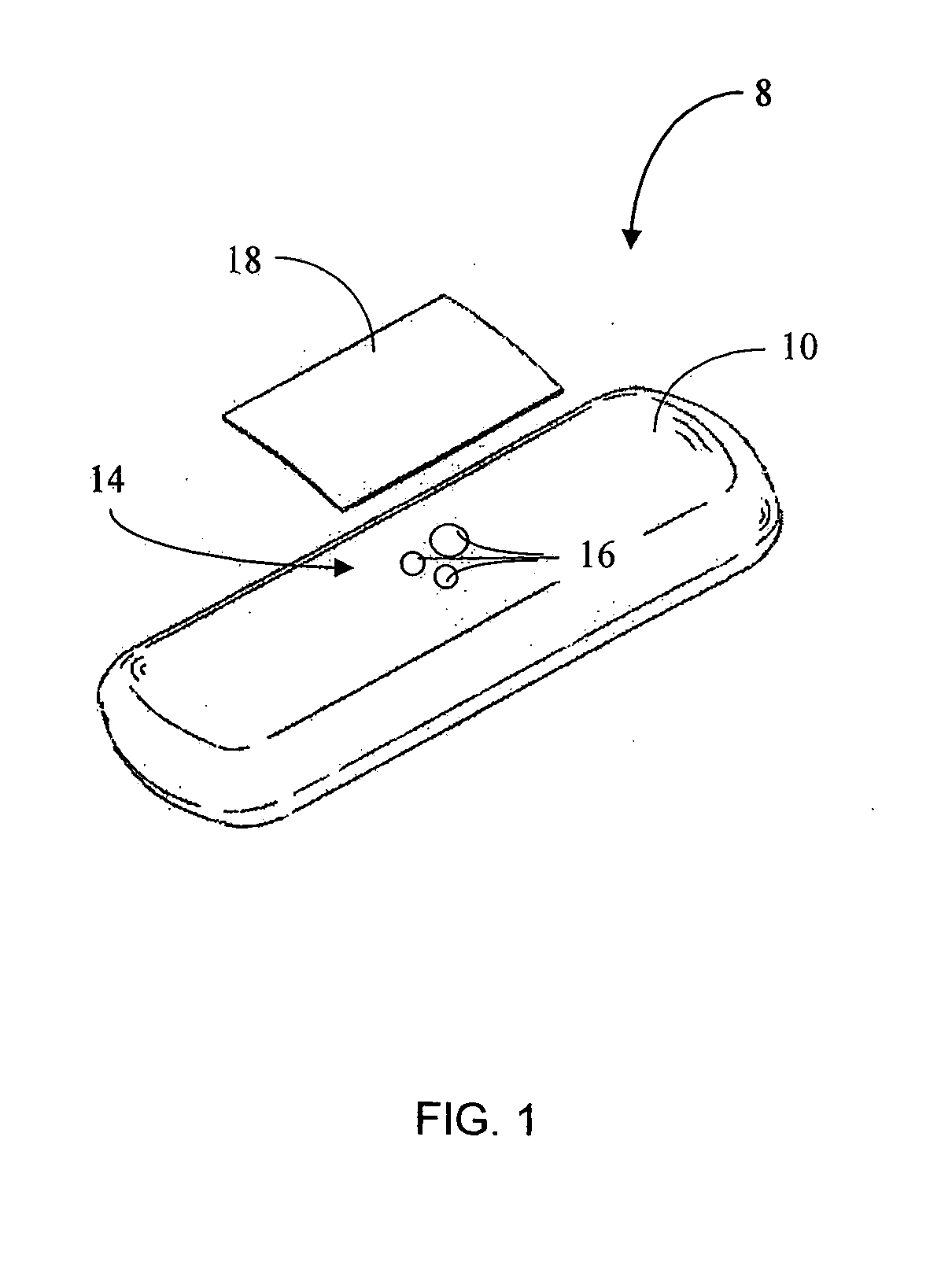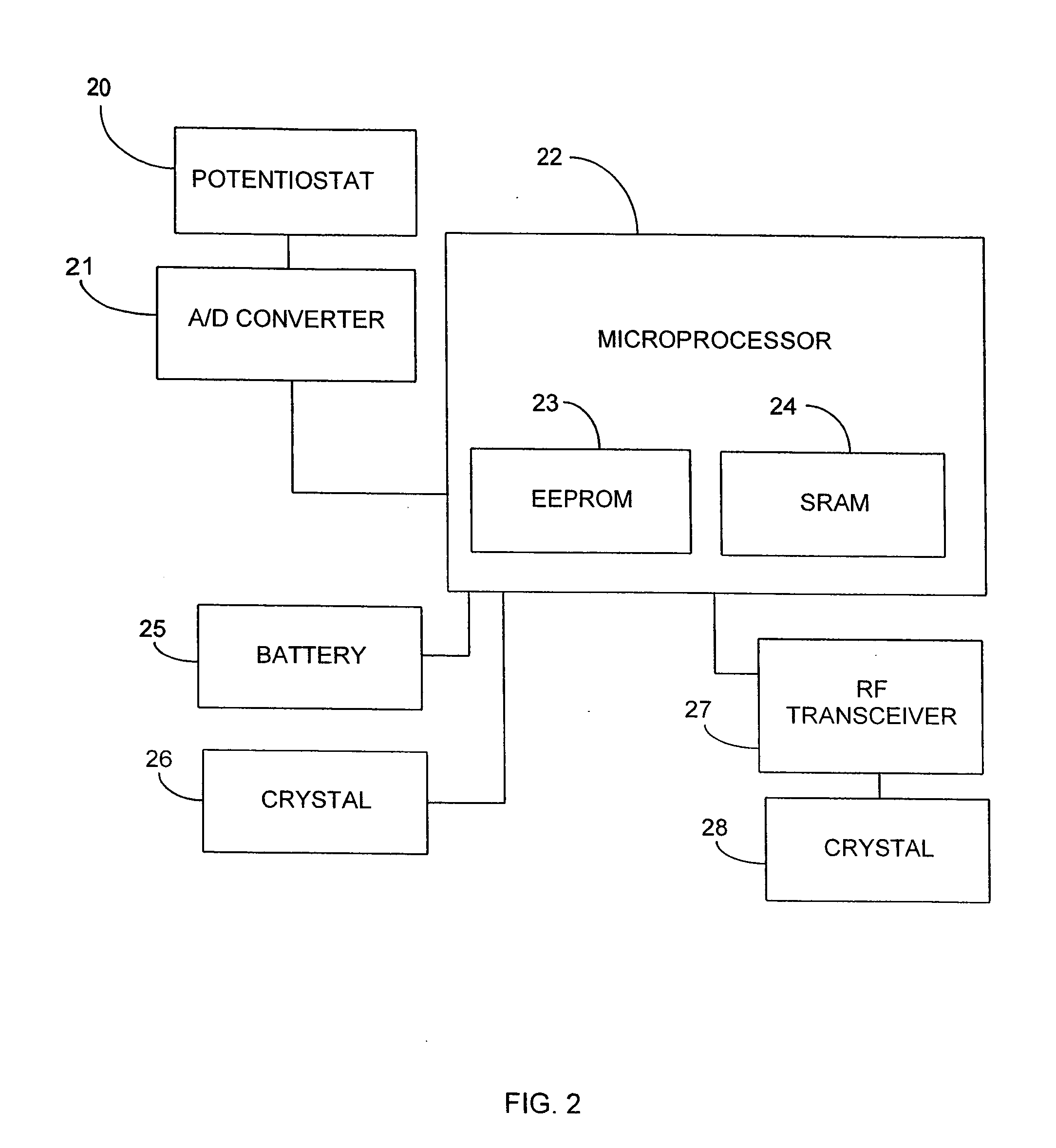Oxygen enhancing membrane systems for implantable devices
a technology of oxygen-enhancing membranes and implantable devices, which is applied in the field of oxygen-enhancing membrane systems for implantable devices, can solve the problems of not knowing if the blood glucose value is going up (higher) or down (lower) based on conventional methods, and the diabetic is likely to find
- Summary
- Abstract
- Description
- Claims
- Application Information
AI Technical Summary
Benefits of technology
Problems solved by technology
Method used
Image
Examples
first embodiment
[0008] Accordingly, in a first embodiment, an electrochemical sensor for determining a presence or a concentration of an analyte in a fluid is provided, the sensor including a membrane system including an enzyme domain including an enzyme that reacts with the analyte in the fluid as it passes through the enzyme domain; and a working electrode including a conductive material, wherein the working electrode is configured to measure a product of a reaction of the enzyme with the analyte, wherein the membrane system includes a polymer material with a high oxygen solubility.
[0009] In an aspect of the first embodiment, the enzyme domain includes a polymer material with a high oxygen solubility.
[0010] In an aspect of the first embodiment, the polymer material is selected from the group consisting of silicone, fluorocarbon, and perfluorocarbon.
[0011] In an aspect of the first embodiment, the sensor further includes a resistance domain configured to restrict a flow of the analyte therethrou...
second embodiment
[0021] In a second embodiment, an analyte sensing device configured for implantation into a tissue of a host is provided, the device including an oxygen-utilizing source; a membrane system configured to provide at least one function selected from the group consisting of protection of the device from a biological environment; diffusion resistance of an analyte; a catalyst for enabling an enzymatic reaction; and limitation of interfering species; wherein the membrane system includes a polymer material with a high oxygen solubility, wherein the membrane system is adjacent to the oxygen-utilizing source.
[0022] In an aspect of the second embodiment, the oxygen-utilizing source includes an enzyme.
[0023] In an aspect of the second embodiment, the membrane system includes the polymer material with the high oxygen solubility, wherein the polymer material is substantially continuously situated between the enzyme and the tissue.
[0024] In an aspect of the second embodiment, the oxygen-utilizi...
PUM
| Property | Measurement | Unit |
|---|---|---|
| bias voltage | aaaaa | aaaaa |
| thickness | aaaaa | aaaaa |
| thickness | aaaaa | aaaaa |
Abstract
Description
Claims
Application Information
 Login to View More
Login to View More - R&D
- Intellectual Property
- Life Sciences
- Materials
- Tech Scout
- Unparalleled Data Quality
- Higher Quality Content
- 60% Fewer Hallucinations
Browse by: Latest US Patents, China's latest patents, Technical Efficacy Thesaurus, Application Domain, Technology Topic, Popular Technical Reports.
© 2025 PatSnap. All rights reserved.Legal|Privacy policy|Modern Slavery Act Transparency Statement|Sitemap|About US| Contact US: help@patsnap.com



